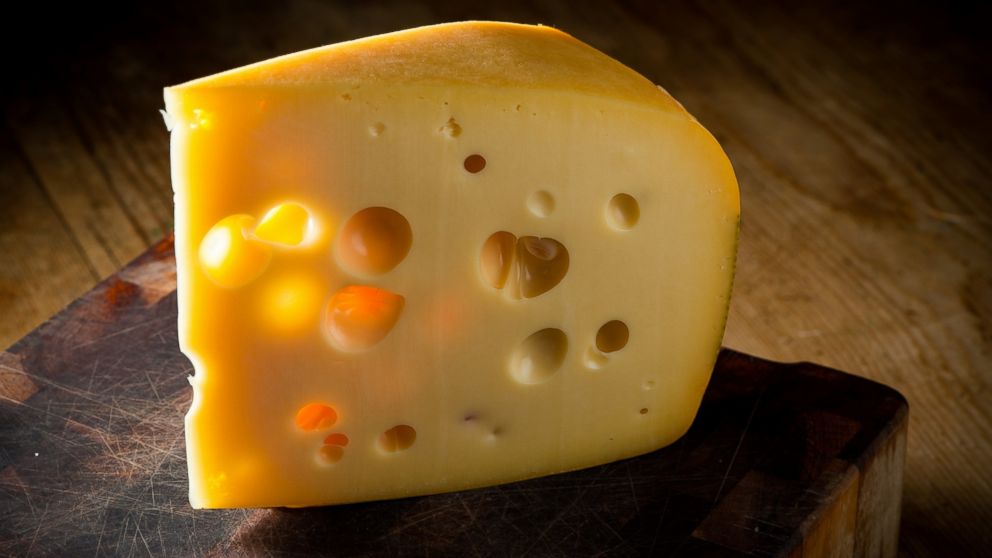Holy Cow! Scientists Decipher Mystery of How Swiss Cheese Holes Appear
Swedish scientists have been investigating cheese mystery for decades.

— -- It's been a dairy mystery for ages, but scientists have finally solved the riddle of what forms the distinctive holes in Swiss cheese.
Spoiler: it's not the mice.
Scientists from the Switzerland-based Agroscope Institute for Food Sciences figured out that microscopic particles of "hay dust" were getting trapped in the cheese, allowing for the distinctive holes or "eyes" in the cheese to form from trapped carbon dioxide gas.
The mystery of Swiss cheese has intrigued scientists since 1917, when an American scientist theorized the holes were caused by bacteria. In recent years scientists had been particularly concerned after new technologies left Swiss cheese a little less hole-y.
In an article published this week in the International Dairy Journal, scientists aimed to figure out once and for all what was actually happening. They added various amounts of powdered hay as the cheese ripened and then cut them open to find the more hay powder, the more hole-y the cheese.
Daniel Wechsler, an author on the study, said he and his fellow researchers were surprised at how simple the answer was to the enduring mystery.
"After spending several years on that topic, the discovery of the magic effect of traces of hay dust on eye formation was for the whole team somehow just an enlightenment," he told ABC News in an email. "The solution is so simple, it’s almost incredible that this mystery remained unsolved until nowadays."
The researchers believe tiny capillary structures in the hay dust can kick off the formation of holes in the cheese. It turned out that new milking methods meant less chance for microbial contamination but it also meant no hay particles to help form the holes that are distinctive to Swiss cheese.
Wechsler said after making the discovery, he felt like celebrating, saying, "It feels just like 'Say cheeeeeeeeeeeeeeeeeeeeeeeeeese.'"




